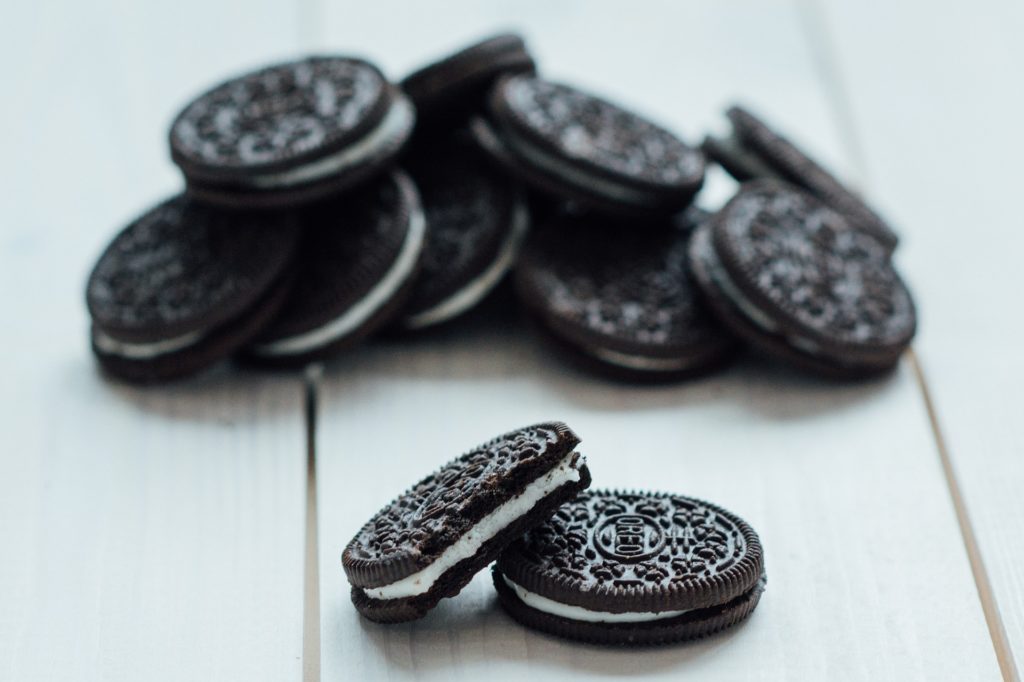
For today’s blog post, I pulled one of my patented nepotistic moves and handed over the keyboard to a couple of my relatives- specifically, my younger brother, Bill – and his 23 year-old son, Reid.
They tell a great story about classic branding, logos, customization, and personalization – as well as how to keep an iconic brand fresh and buzzworthy. And Bill and Reid are more than qualified to tackle the job.
Bill has been with Jacobs Media for more than 30 years, joining the company after serving as a research analyst for Eastman Radio. He has consulted 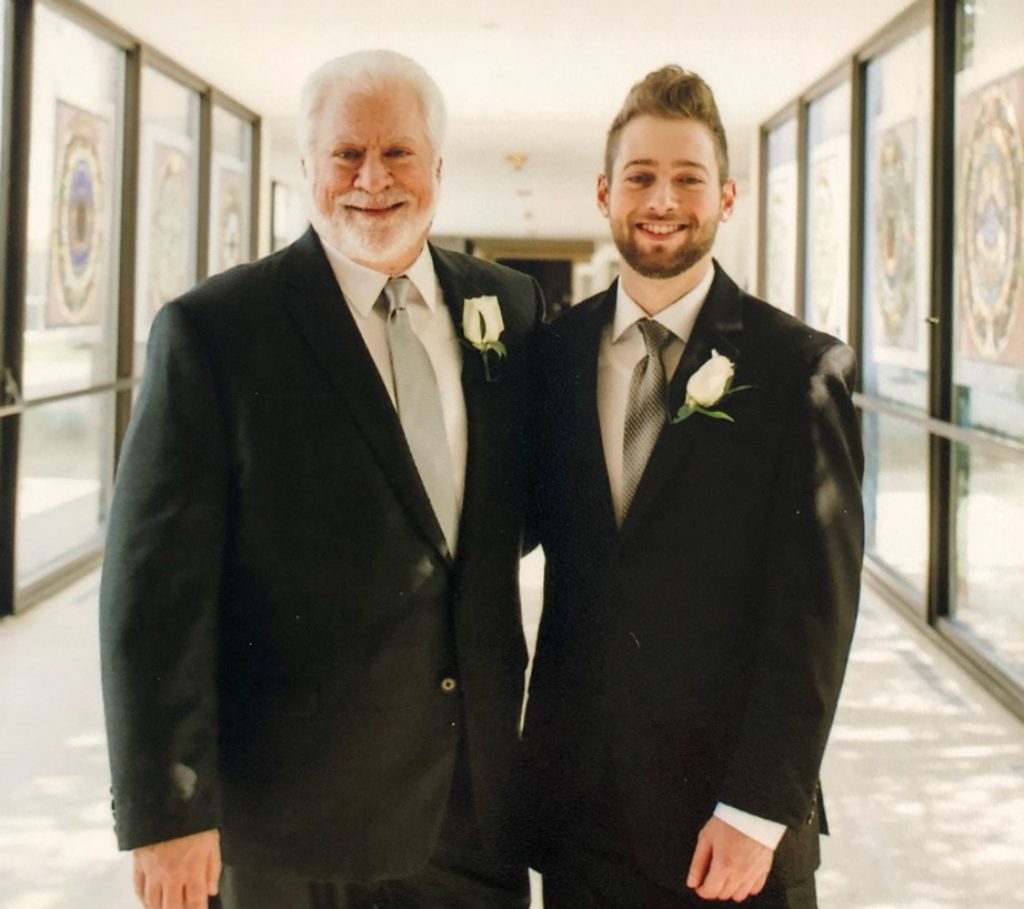 dozens of rock-based radio stations over the decades.
dozens of rock-based radio stations over the decades.
Reid is a recent graduate of Michigan State, and is already hard at work as a graphic designer for Signarama. He is immensely talented, and has a great eye for what is both aesthetic and fun.
During the past few years, he has done work for Jacobs Media – logos and graphics for our many audience surveys. Today, Bill and Reid collaborate to tell you the story of one of America’s great brands – and how they’re keeping it fresh and vital. – FJ
Bill: I love logos. And so I love this quote from the famous graphic designer, Saul Bass. He’s the creative force behind logo for iconic brands like Quaker Oats and AT&T:
“Logos are a graphic extension of the internal realities of a company which is perfectly qualified as the silent ambassador of your brand.”
It’s a great reminder of the role a logo can play for any brand – and especially a radio station, celebrity talent, or a musical artist.
From The Who’s upward pointing arrow, to Nirvana’s crooked mouth classic smiley, to the most famous one of all, the Rolling Stone’s “lips,” there’s no shortage of memorable ones in the arc of rock ‘n roll.
The truly creative brands have engaged their fans, allowing them to generate their own personalized logos. Metallica and AC/DC are prime examples, and millions of their followers – like me – have taken them up on their offers.

The original ABC FM stations were ahead of their time. When he was corporate research director, Fred conducted focus groups for KLOS that emphatically showed that just the iconic oval shape communicated the station’s identity – even without the call letters or frequency. It wasn’t long before both WRIF and KLOS began massive bumpersticker campaigns, showcasing core artists sans station ID.
For its 50th anniversary, KLOS created its own logo generator, allowing fans to slug in any phrase to commemorate this event. (You can customize your own here, powered by jacapps.)
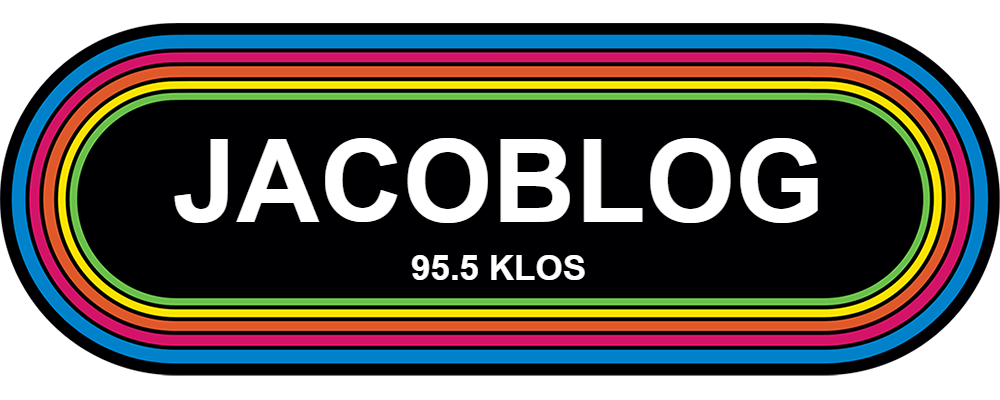
What do fans do with their customized artwork? They display them everywhere, including posting them on their social media sites.
And now this trend has been turbocharged by an iconic brand that’s been around for more than a century. Oreo cookies were first baked in 1912, Even though no one really knows where the name “Oreo” originated, they are the best-selling cookie brand in the world. It’s not even close.
What does that have to do with your radio station? If you’re programming, managing, or selling a gold-based format, in particular, Oreo provides a wonderful object lesson about how to keep the product fun, accessible, multi-generational, and yes, new.
The music is the music. And yes, the cookie is the cookie. It’s how you reshuffle the deck, tweak the brand, and allow fans to participate in the fun.
Even though your grandparents munched on Oreo cookies and milk, the brand has been heavily engaged in social media in recent years. Remember that (in)famous Super Bowl between the Ravens and 49ers in 2013? Technically, it was numbered XLVII, but it became known as the Blackout Bowl because of a power outage at the Super Dome in New Orleans that lasted 34 long minutes.
Oreos won social media that night with this brilliant tweet:
Power out? No problem. pic.twitter.com/dnQ7pOgC
— OREO Cookie (@Oreo) February 4, 2013
And the innovation hasn’t stopped. Even though theirs is a static product, the brand’s marketing and creative team find new ways to keep things fresh – and fun – for their base of munchers. There are now dozens of different types of Oreo cookies. Yes, you can nosh on the traditional variety or live dangerously with versions like the Wasabi Oreos (not my style).
And realizing that many of us would spend too much time at home, the geniuses at Oreo came up with eight new flavors in 2020. Have you tried 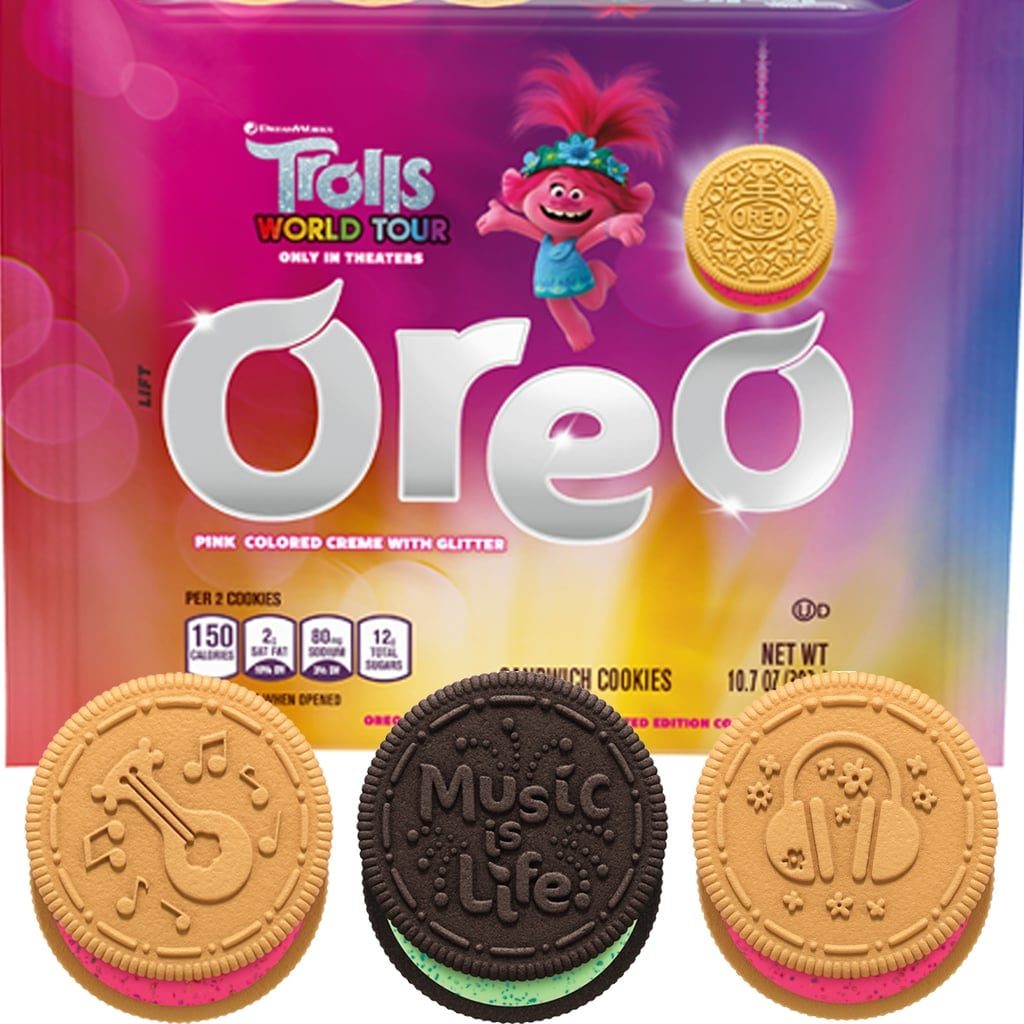 tiramisu, gingerbread, and caramel coconut?
tiramisu, gingerbread, and caramel coconut?
Since 2012, Oreo has launched 65 new flavors.
The New York Times recently put the question to the Oreo brass: What’s the strategy behind all these cookie varieties?
And the answer from the brand’s senior director, Justin Parnell, would have made Classic Rock radio programmers proud:
“When we do it well, it drives (sales of) our classic Oreo cookie, as well as the sales of the limited edition.”
Like great stunting on gold-based stations – special weekends, commemorative events – tend to drive more interest to the Mother Ship – the Oreo…er, the station.
And the brand has started launching current pop celebrity versions of Oreo cookies. There’s Lady Gaga’s “Chromatica,” cookie which hits the market in January. (Imagine a contemporary artist plugging a Classic Rock station.)
⚔️ LADY GAGA x @OREO x #Chromatica 💓 Dropping soon! pic.twitter.com/Gtd5qeZXZi
— Lady Gaga (@ladygaga) December 2, 2020
But now, the Oreo team has outdone itself.
They’ve come out with customizable cookies, where you can design every aspect of the cookie, right down to the sprinkles. Check it out here.
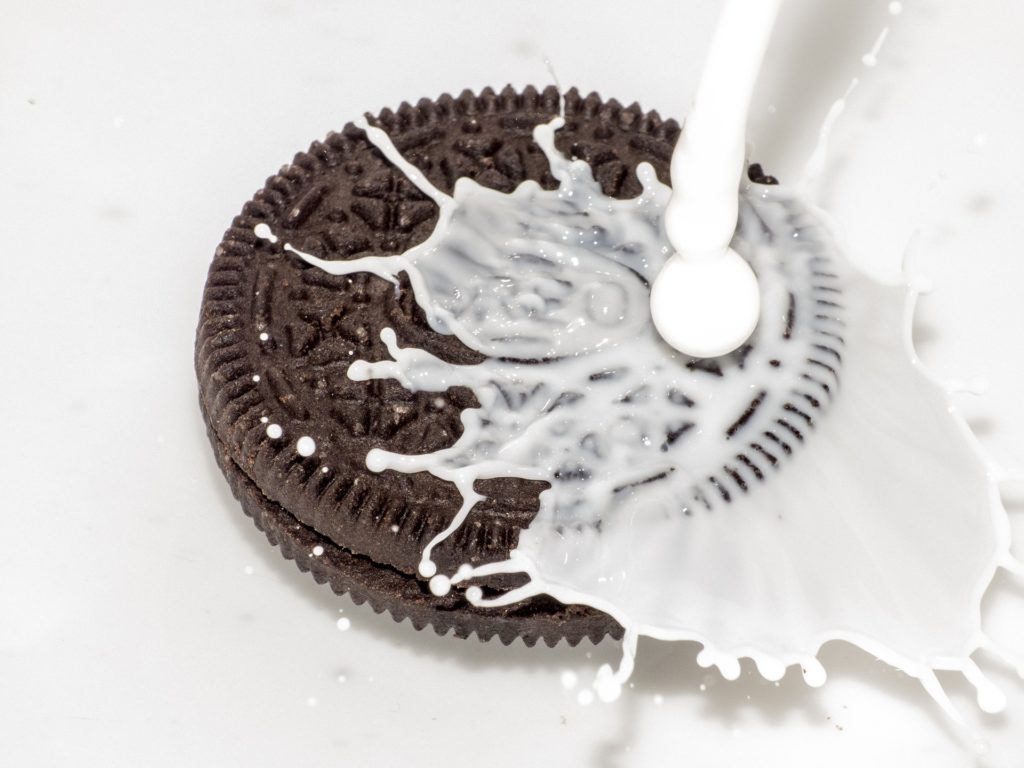 You don’t need to be Lady Gaga, Bieber, or Lizzo to have your own cookie. Any brand – or person for that matter – can create their very own version of Oreo.
You don’t need to be Lady Gaga, Bieber, or Lizzo to have your own cookie. Any brand – or person for that matter – can create their very own version of Oreo.
Once you design and personalize them to your specs, you can purchase your Oreo masterpieces for the not-too-bad-price of $29.95 for a box of a dozen custom Oreo cookies.
From a marketing/merchandizing standpoint, this is something really special for a storied brand. And by allowing fans – or other brands – to design their own Oreos, including the cream, the colors, and the sprinkles, it’s a home run.
And that got me thinking, what if I put Reid to work, mocking up a few hand-crafted Oreos to illustrate how any brand can enhance their image and provide their listeners with some yummy goodness?
Here’s how he approached the challenge, along with some of his Oreo-inspired art:
Reid: The process of designing your own Oreo is a pretty simple one.
You select the color of the crème, whether or not you want the cookie dipped in fudge or white fudge, and the color of the sprinkle. Then you can plop in your image right in the wreath of sprinkles.
While toying with the online tool, I discovered you can have more than one color of sprinkles, to add more excitement to your design, and to make it work for your logo or image.
Approaching the process of creating custom Oreos for bands, personality shows, and radio stations, required some homework. 
For the Rolling Stones Oreo cookie, the red and white sprinkles play off the red and white in their well-known lips logo. And when played in tandem with the blue crème, it creates a nod to the Union Jack flag.
Radio branding a la Oreo is a different challenge, but it turned out the online tool kit was versatile enough to do some color experimentation.
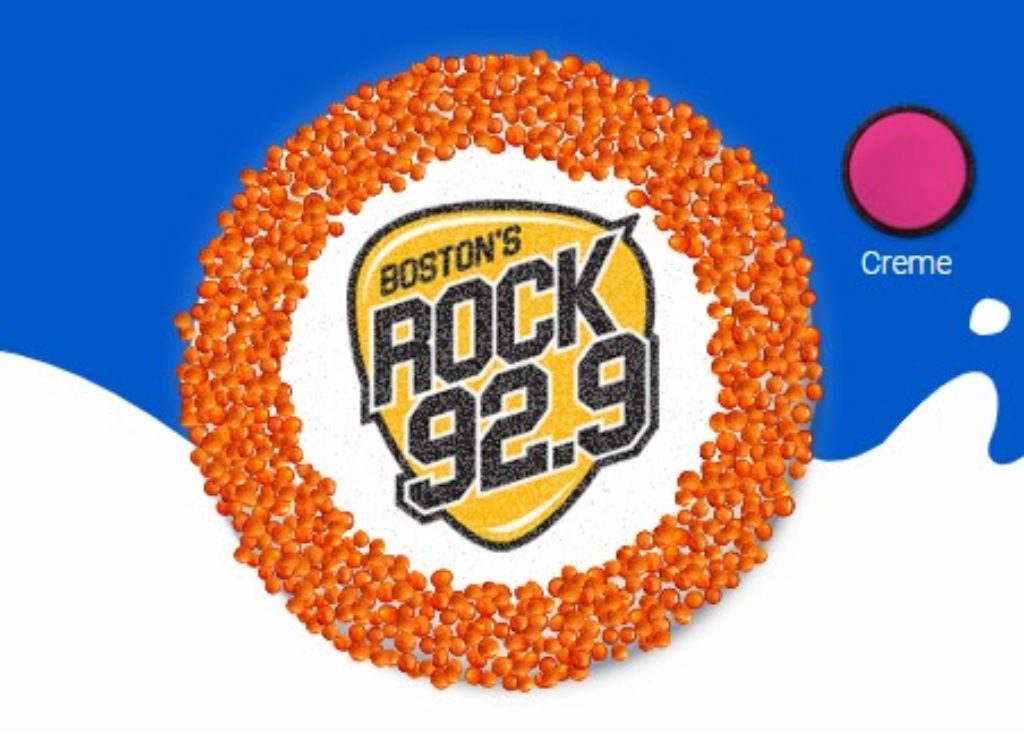 Approaching design of the Radio 92.9 (WBOS) version of the Oreo cookie, I really liked that nice shade of yellow in their logo.
Approaching design of the Radio 92.9 (WBOS) version of the Oreo cookie, I really liked that nice shade of yellow in their logo.
So, I wanted to lean into that sense of vibrancy with orange sprinkles and a nice surprise of pink crème when bitten into.
See what you think.
On the graphic below, you can see how the others turned out. The process is fun and easy to do, and you can apply your creative energies – just like you would with designing and tweaking your own logo.
As you can see below, many of these logos look especially good, and really pop on the cookies.
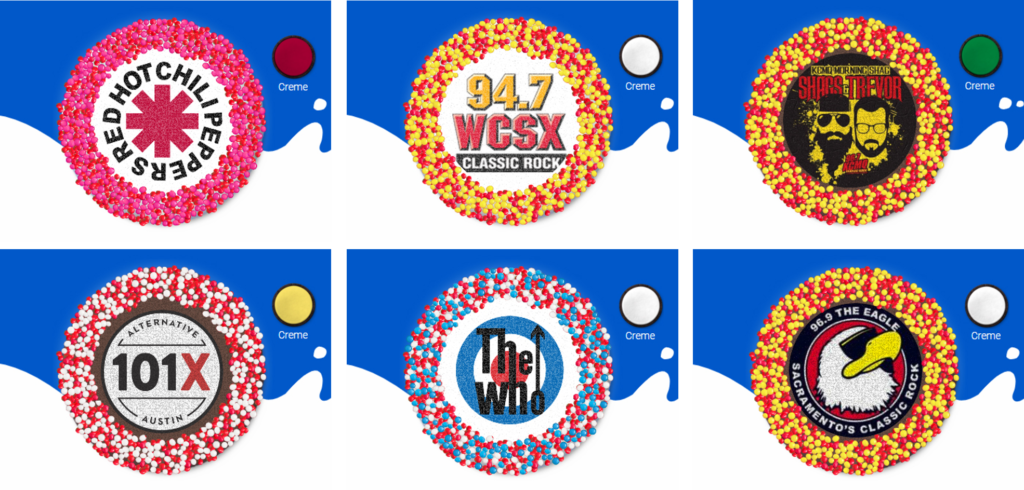
These are just some examples of how to stretch a brand to an edible application that can be done in a matter of minutes. A lot more can be done with these Oreos, such as designing on a separate program in the circle the Oreo site requires you to use, as well as placing type on a circular path which would be a cool effect.
Bill: There are great lessons here for all marketers and programmers – in or out of radio – about how to manage a classic brand in this millennium. Being in the moment socially, leveraging an iconic logo, keeping the product interesting and updated, and allowing fans to participate in the process – that’s the recipe for success.
Please pass the milk.
You can check out Reid Jacobs’ non-cookie work here.
And you can customize your own box of Oreo cookies here.
- Media And Technology In 2025: Believe It Or Not! - April 18, 2025
- In Radio, You Just Never Know - April 17, 2025
- The Secret To Making A Great Podcast (And Great Radio) - April 16, 2025




Thanks Fred, Bill and Reid for using ROCK 92.9 as an example. Looks cool!
It does, doesn’t it? (And it tastes great, too.)
Reid’s work samples and his clever writing skills are above the bar. (I’m often under the bar. I blame that on my love of bourbon.) Too bad he won’t get much work from radio stations since most all of us have zero budget. Thank you for introducing this, quickly becoming a rock star in his field, talented young man.
I will pass this onto him, Bobby. From you, a truly high compliment.